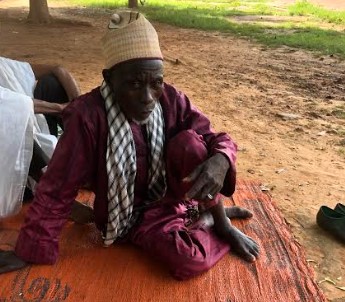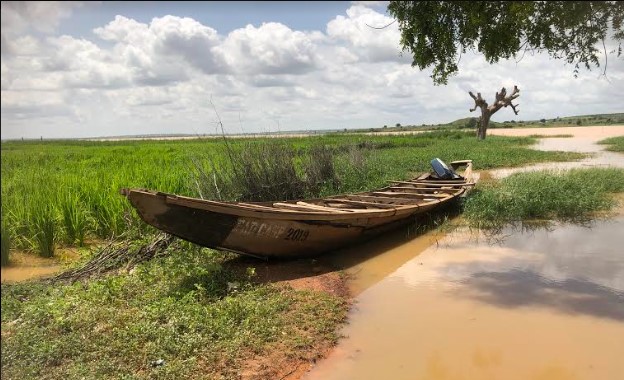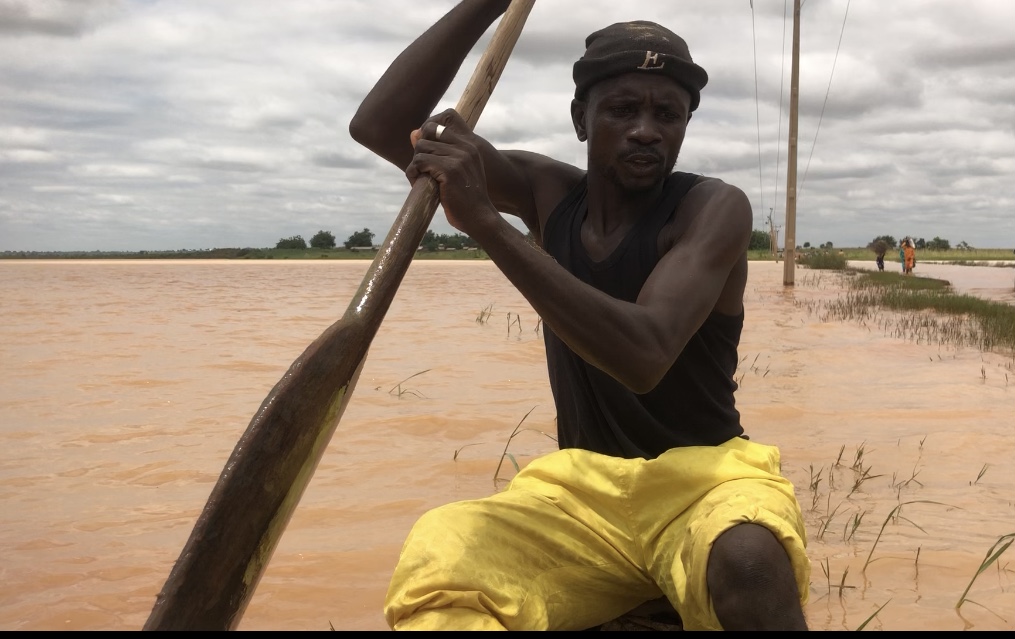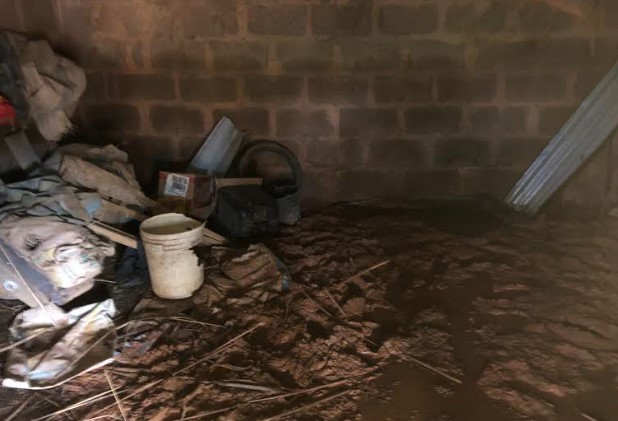The inability of successive governments to complete the multi-million naira Shagari Dam in Sokoto State continues to cause monumental hardships, and loss of lives and property for residents in the affected communities; some of them have perished in the process; reports WikkiTimes’ Beloved John.
Aishat Usman was a lovely woman and mother, recalls her brother Usman Bala.
She had a calm demeanor and smiled quite often. She was also a widow who busied herself mostly with farming and nurturing her 7-month old son until she died in 2017.
Aishat was on the way to her farm across the Shagari river, her baby strapped on her back, when the canoe ferrying her capsized.
Although her son, who died 3 three months later, was rescued, Aishat didn’t survive. That incident was one of many cases of boat mishaps in Lambara, Shagari local government in Sokoto state.

Bala, Aishat’s brother, told WikkiTimes that boat incidents occurred annually. Every year, there’s at least a case of boat mishap in the community, which inevitably increases the number of casualties.
The mishap that took Aishat’s life also took that of 29 others, including children. Thirteen Lambara villagers had also died a year before.
The river is an overflow of the Shagari earth dam. An FG-owned project was initiated in 2004 under the administration of the then President, Olusegun Obasanjo, by the Ministry of Water Resources 15 years ago.
Although expected to make life and farming more productive for communities in the environs, the dam has caused irreparable damage.
This year, there is yet to be a mishap in the village but Bala is certain such an incident would most likely occur before the years run out. “It is yearly,” he emphasised.
DEATHS, INCREASED RISK AS WATER VOLUME RISES
The same circumstance is found in Talkama community. For residents, movement into many of its neighbouring villages is limited to transit through the river. This makes it difficult to avoid the risk of a mishap.
For Abubakar Jabbi, the death of his closest friend still brings tears to his eyes.
The friend, Aliyu Soho, was being ferried from Talkama, to Doruwa, a neighbouring village. However, the canoe, too weak to withstand the torrent, sank midway.
“His death left me in anguish,” Abubakar admitted. “He died in late 2019. Six people died in that accident. It is a horrifying but common phenomenon.”
Jabbi explained that the mishap in his village and other villages is due to the absence of good boats, life jackets, and other safety tools to aid transportation across the river.
“If the canoe available for use was better or we have access to some safety measures, many lives could have been saved.
“We don’t have that and the water volume keeps increasing as the dam continues to overflow, particularly during the rainy seasons,” he decried.

Usman Ahmed, another resident, told WikkiTimes that a boat mishap is annual. Every year there is at least one boat incident in his community or in any of the neighbouring villages that will inevitably increase the number of casualties.
According to Ahmed, the risk of this incident heightens as the water volume increases. Despite the growing river size, the villagers are stuck with using the same old rickety canoes.
SHAGARI IRRIGATION SCHEME YET TO COMMENCE
The aftermath of the dam saw the end of many settlements, relocation, death of villagers, significant loss of properties, and for some, an endless struggle for survival.
The intense flooding caused by the dam construction has subjected the villagers to tragic experiences and harsh living conditions.
The Sharagi dam which should be a blessing is, however, a threat and constant source of terror to the farming communities in its environs.
According to the former Sokoto Rima River Development Agency (SRRDA), Mukhtar Ahmed Anka, the reservoir was constructed for the provision of portable water for shagari council and its environs and to improve the social and economic well-being of residents in communities around the dam.
But 15 years after construction, the intended social and economic benefits are yet to be achieved.
The Shagari Earth project involving a dam construction which began in 2004 and was completed in 2007, and an irrigation scheme, yet to commence remain moot over a decade after initiation.
The project is supposed to be functional upon the completion of the irrigation scheme but 15 years after the completion of the dam, the scheme is yet to take off.
The Irrigation scheme was initiated to provide irrigation fields, and drainage, and facilitate the cultivation of crops by the farming communities in its vicinity during the dry season.
WikkiTimes learned that, in 2009, the project was awarded to Messrs C.G.C. Nig. Ltd. for the sum of N847, 238, 749.88.
The delay in the construction of this scheme has caused tremendous anguish to the population residing in surrounding communities.
In the absence of an irrigation scheme, the 15 million cubic capacity reservoir spills out excess water, and overflows every rainy season, submerging everything in its environs.
ROAD PATH SUBMERGED BY DAM
The untarred road that leads to Rugger Buda, another Shagari community has become vast land of water that is mostly navigated on foot or using a canoe.
Mohammed Nasiru, a fisherman, stopped at the edge of his canoe, scooping the excess water that had flowed in as he paddled to the riverbank.
“It costs N50 to get to the other side of the road,” he said loudly.
Nasiru scooped out most of the water in his canoe to reduce the risk of sinking midway, before beckoning four of the people in the queue to enter his canoe.

On both ends of the river, people stood patiently waiting to be ferried across the heavy water, while the cars and motorcycles that had conveyed them, turned back.
As Nasiru explained, the brown water that submerged the road is flowing from the dam. It flows that way during every rainy season and floods the area.
The flooding this year is heavier, necessitating the use of standard boats on that road. Sadly, his small rickety canoe is the only alternative for the population residing in Rugerbuda and other neighbouring communities.
The canoe was old and weak. There was no life jacket in sight but was the only alternative for villagers too scared to walk through the heavy torrent.
Too terrified to set her feet in the water or use the small canoes that she had seen ferrying other villagers, Ladi Hajiagadu, a resident, has not stepped outside of her village in five years.
The 32-year-old has pledged to remain in the confines of her village rather than expose herself and her children to such risk. Not after her husband had drowned trying to cross over.
The memory of the incident is still fresh, and the mother still struggles to look at the large pool of water without becoming sorrowful.
Ladi narrated the incident that led to the death of Hajiagadu, her husband, in 2017.
“Hajiagadu was hurrying home from work that day. It was dark, canoe riders were unavailable, and he had to walk through the water. But the water waves were stronger than usual, and he lost control and drowned. His body was found on the water’s surface the next morning,” she recounted.
HOUSES ARE FLOODED AND DESTROYED
Aside from the frequent mishaps, shagari villagers also suffer heavy flooding on their farms and homes.
According to the villagers, the dam construction restricted water flow out of the area but continued to spill excess water into it, causing intense flooding in their homes in the last decade.
Despite the forced relocation between 2004 and 2007, some of the new settlements still get flooded by the overflowing reservoir depending on the volume of the water.
In Lambara water volume rose significantly this year due to the increased rainfall in Sokoto. This has resulted in the flooding of Mohammed Bala’s home.
The flooding started in early September and worsened after every rainfall.
Two of the three small rooms that served as home for him, his three wives, and seven children got flooded and have become unusable.
One of the rooms is cracked and partly broken. Inside, his appliances are packed on an old couch and kept in a corner to prevent them from getting damaged by water.
The floor was murky. Although the family had excavated the water, the residue of the flood could be seen all over. The other room was also messy and inhabitable.

Bala is saddened by the situation. His house will crumble eventually if this continues. He fears for the fate of his household.
“This is what I use to excavate the water,” Haruna said pointing at a small wastewater pumping machine. I can’t stop the water from flowing in, that is not within my power, but I excavate as quickly as possible.”
According to Tayo Fatinikun, director of Life Helper Initiative, an NGO in Sokoto, the increase in rainfall and excess water spill from the dam to such low land areas are major causes of the flooding in Shagari.
Fatinikun reckoned that though the dam was constructed to improve the town, it has negatively affected villagers residing close to the dam.
He appealed to the government to show commitment to the completion of the project, noting that the irrigation scheme would curb the tragic flood crisis in the area but it is yet to be constructed.
CORN, RICE FARMS SUBMERGED IN WATER
Amina Mohammed, a resident of Lambara village fears that they might be forced to resettle if the volume of the water continues to rise.
The mother of two explained that the rainfall this year increased significantly causing the flooding to increase.
Now, the water volume is higher, more land has been submerged and the water is moving deeper into their settlement.
The water has not only affected her home, but it has also submerged her farm destroying the beans and millet she had cultivated
“I had a farm not too far from my home and the water had taken everything. It has destroyed the corn, millet, and cassava. This happened one month ago, and the plots are still heavily flooded. I have nothing to harvest. The water volume is quite high, so it sunk all my produce. It is distressing and sad,” she noted.
Antti Yagi, another villager, has lost his farms to the flooding caused by the reservoir. All three of his farms located in the village sunk into the water.
Yagi reckoned that the reservoir has snatched away his only source of income.
The rice, millet, and maize he planted on his farm are all gone. For Yagi, the reservoir has done nothing but continue to threaten his livelihood.
“Certainly, there will be hunger in my household this year. I don’t know how to feed or provide for myself and my family. The farms were all I had and now they are all gone. The water covered all three of them. Everything. What do I have to do?” he said disconcertingly.
VILLAGERS SUFFER NEGLECT, POVERTY
WikkiTimes learned that about 30 communities and hundreds of farm plots sunk during the construction of the reservoir.
And between 2007 – 2012, a huge population of villagers relocated, their homes and properties in ruins.
For Mohammed Sami, the incident exposed him and his family to years of hunger and lack. After his resettlement in 2012, catering for his two wives and seventeen children became arduous.
Sami said promises by the government to compensate for losses were unfulfilled.
After relocating, Mohammed resorted to fishing from the dam which is currently on the fringes of his new settlement but the paltry sum he makes is not adequate for their daily needs.
Umaru Bawa, a resident of Rugerbuda said he lost all his five farms, and food stores in just one rainy night in 2007.
He had to rush out of the home with his family when the water volume in his home reached his waistline.
The 78-year-old said some villagers were lucky to receive support from external relations, but many others like himself are still yet to recover what was lost.
Over a decade after the incident, Bawa still languishes over his loss. Unable to make up for the loss and find a standard source of income as providing for his wife and five children has been a difficult affair.
STATE AUTHORITY RESPONSIBLE FOR MANAGING THIS CRISIS — NEMA
When contacted, the zonal director of the National Emergency Management Agency (NEMA), in Sokoto, Aliyu Kafindangi affirmed that the flooding caused by the Shagari earth dam is a major challenge to residents of neighbouring villages all year round.
Aliyu said the impact of the dam remains grim due to the failure of the state government to manage the situation adequately.
He stated that although new lands have been provided for resettlement, the government is yet to enforce compliance.
He said the state authority is also yet to provide life jackets and monitor movement across the fam to curb the frequent mishaps.
“The responsibility lies with the state government. There is a need to provide life jackets, monitor the use of canoes across the dam, and enforce rules that will mitigate the impact of the dam on the villagers.
“NEMA conducted an assessment and sent the reports to the state government but is yet to act on it.
“The state government is given ecological funds monthly, what are they doing with it?
“NEMA only acts when a disaster overwhelms the state government. A disaster that is not widespread with significant loss of lives and properties, is the responsibility of either the state or local government. The agency can only compliment the effort,” he said.
However, Chika Mayana, an executive director of the Sokoto Rima River Basin Development has refused to address the subject.
When WikkiTimes reached out, he declined to speak, stating that he is unauthorised to address the press on such matters.
This publication, republished from WikkiTimes is produced with support from the Wole Soyinka Centre for Investigative Journalism (WSCIJ) under the Collaborative Media Engagement for Development Inclusivity and Accountability Project (CMEDIA) funded by the MacArthur Foundation.




